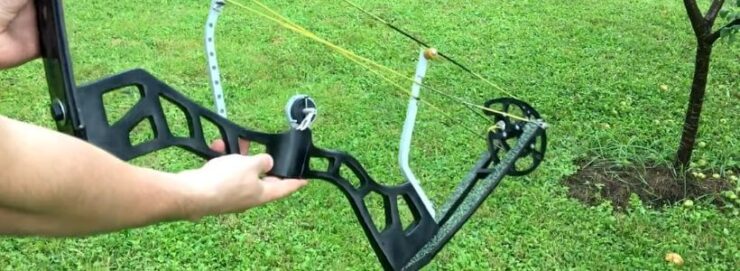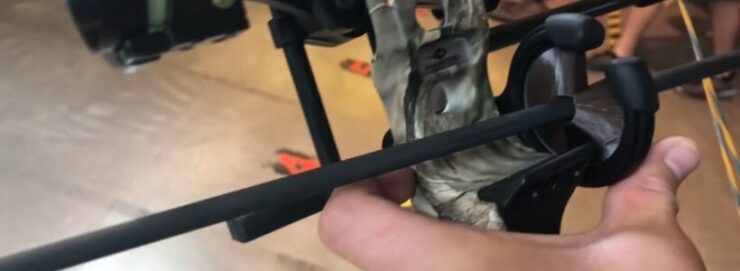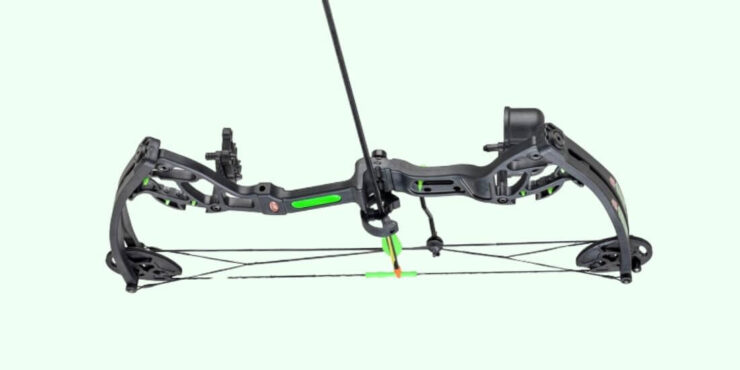Compared to other types of bows, compound bows are technologically more advanced. They are equipped with features to improve your shooting accuracy, and this makes them ideal for competitions, best compound bow for target shooting, and even hunting.
To get the most out of each arrow shot, you must practice proper archery techniques. The idea is to take full advantage of the design of your bow for improved precision and enhanced shooting power.
Dive right in, and let’s learn how to shoot a compound bow more accurately. We took a peek inside the minds of various archery experts around the world, including renowned archery trainers, to round up some tips and key points to enhance your shooting accuracy.
Check them out!
SHOOT A COMPOUND BOW MORE ACCURATELY
Tune Your Bow
Have you ever thought about the probability of your compound bow letting you down because it is not fine-tuned? If you are practicing proper archery techniques, yet your shooting accuracy is not improving, your bow could be the culprit.
There are two areas of your compound bow that may need tuning. Let’s check them out in more detail:
Cam Rotation
Cam rotation or timing issues only affect bows that have more than one cam. It is best to ensure that both cams rotate in the same way and get to a full rotation at the same time. If they don’t, it may feel as though your bowstrings are wiggly or loose.
Center-Shot Alignment
Another area that may need tuning is the center shot alignment. This is your bow’s nock placement and rest. Proper placement of the rest and nock ensures that arrows released from your bow head directly to the target.
Practice Your Form
To enhance your shooting accuracy with a compound bow, you must maintain a proper form at all times. When your structure is incorrect, you are likely not to shoot with precision. This is irrespective of how advanced your bow is or even the distance between you and your target.
The key to maintaining the right form is to begin by being relaxed and comfortable in general. Any shakiness and heavy breathing will only mess with your precision. Breathe when you draw the bow and focus only on your target.
Your feet are your shooting platform. Make sure they are neither too close nor too apart from each other. When the feet are too close, this makes you unstable and forces you to lean to your side. Anytime they are too far apart, you may wobble back and forth.
Use Accessories Like Sights and Stabilizers

Take it from me; adding sights and stabilizers to your bow can dramatically enhance your shooting accuracy.
Bow sights allow you to aim at a specific pinpoint on your target. Stabilizers, on the other hand, stabilize the bow by adding weight to its bottom. This makes it easier to keep your bow in a vertical position when shooting.
Another perk of using a stabilizer is that it helps you fight against the risk of imparting hand torque on your bow.
Adjust the Bow Grip
Developing a good grip on your bow is crucial, especially if you want to shoot with more precision through long distances. Make sure the grip fits nicely in your hand to ensure minimal risk of your hand imparting torque on the bow.
I prefer using bows with thinner grips. This reduces the surface area in direct contact with my hand, and I can feel the push into my palm when I make a full draw. Before you release the arrow, relax your grip to reduce the pressure on the wrist.
Adjust the Draw Length
Adjusting the draw length to make it longer — can help increase your shooting speed. However, increased speed may also sacrifice your shooting accuracy. When you stretch your body and shooting arm too far back, this is likely to impact the alignment of your bow arm and throw your shot execution off each time.
You should know that the draw length is too long if you have to lean your upper body backward for your face to touch the string. Keep in mind that anytime the draw length is off (even by a single inch), this could cause unwarranted inconsistencies and inaccuracies.
Adjust Your Draw Weight Accordingly
Take note of how smooth your draw is when your drawback. If you notice any shakiness or resistance, the chances are that your draw weight is too high, and it needs to be adjusted. Beginners should use lower draw weights, at least until their shooting muscles are stronger.
Find the Best Anchor Point

The anchor is that area on the side of your face where your string hand locks. It is typical for finger shooters to anchor their index finger on the space between their chin and the corner of their mouth and place the thumb right below the chin.
Here’s the deal, there is no correct or incorrect anchor. The essential thing is to ensure that your anchor point aligns your aiming eye with the bowstring. Consistent anchor points give you a steady aim by providing more even distribution of your body weight.
Relax Your Release
Relaxing your release during a shot is easier said than done. Unfortunately, this is a concept you must master because a single jerk or flinch is guaranteed to throw off the whole shot.
When doing the fingers shot, releasing your fingers at the same time without plucking the string and causing shooting inaccuracies is hard. Then again, gloves may develop grooves and cause twitching when releasing the arrow. Arguably, it is better to use a tab if you want to use your fingers to shoot a compound bow.
The easiest way to relax your release is to use a mechanical release aid. This is a simple yet useful component that can drastically result in better shooting accuracy. Just draw, anchor, aim, put your hand on the mechanical release trigger and squeeze it gently to release the bow.
Conclusion
There you have it; a list of 8 tried and tested tips on how to shoot a compound bow more accurately. Experiment with different tips and note the improvement in the precision of your shots.

